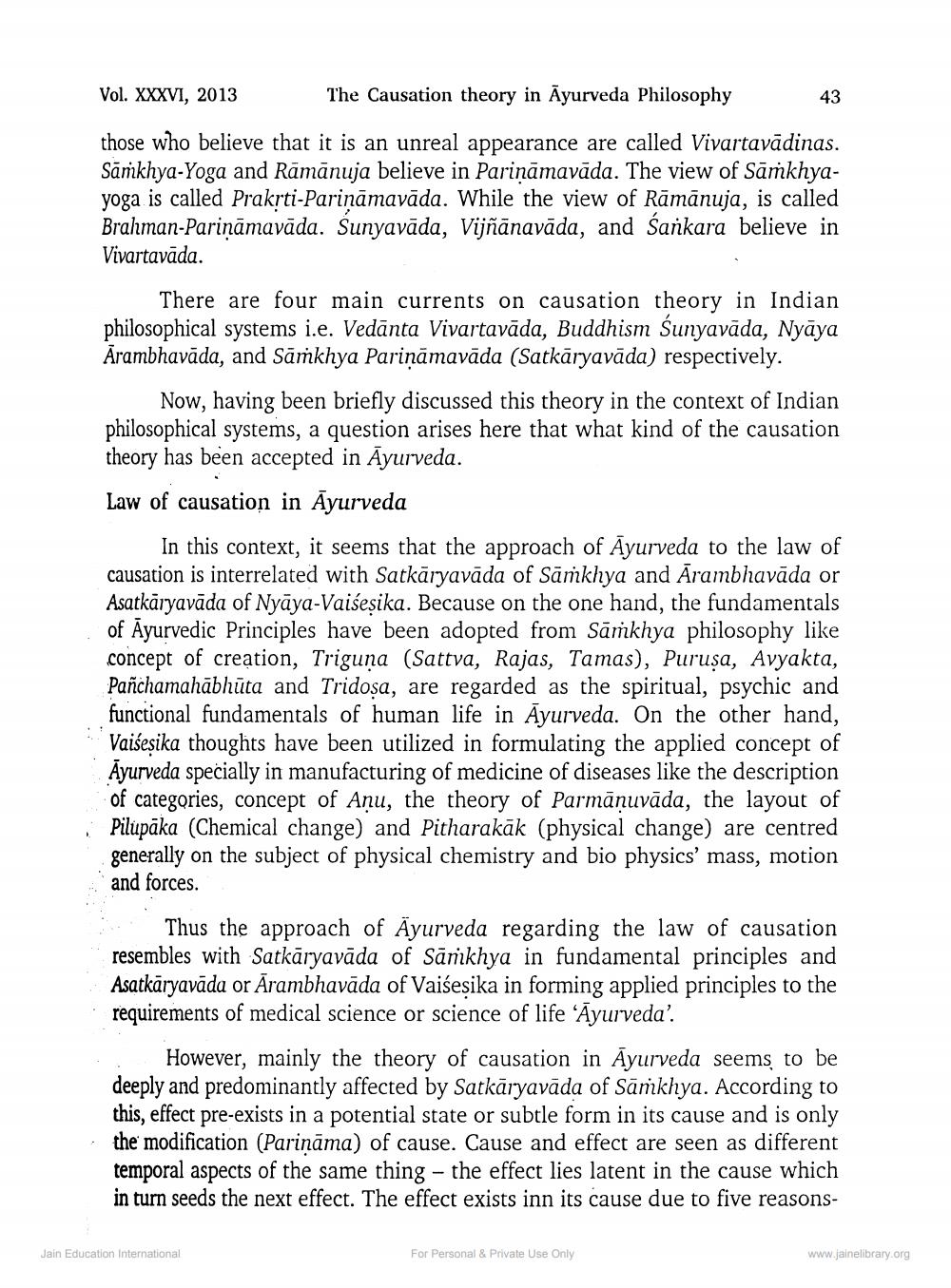________________
Vol. XXXVI, 2013
The Causation theory in Ayurveda Philosophy
43
those who believe that it is an unreal appearance are called Vivartavādinas. Sānkhya-Yoga and Rāmānuja believe in Pariņāmavāda. The view of Sāṁkhyayoga is called Prakrti-Pariņāmavāda. While the view of Rāmānuja, is called Brahman-Parināmavāda. Sunyavāda, Vijñānavāda, and Sankara believe in Vivartavāda.
There are four main currents on causation theory in Indian philosophical systems i.e. Vedānta Vivartavāda, Buddhism Sunyavāda, Nyāya Arambhavāda, and Samkhya Parināmavāda (Satkāryavāda) respectively
Now, having been briefly discussed this theory in the context of Indian philosophical systems, a question arises here that what kind of the causation theory has been accepted in Ayurveda. Law of causation in Ayurveda
In this context, it seems that the approach of Ayurveda to the law of causation is interrelated with Satkāryavāda of Sāmkhya and Arambhavāda or Asatkāryavāda of Nyāya-Vaiseșika. Because on the one hand, the fundamentals of Ayurvedic Principles have been adopted from Sāmkhya philosophy like concept of creation, Triguna (Sattva, Rajas, Tamas), Purusa, Avyakta, Pañchamahābhūta and Tridosa, are regarded as the spiritual, psychic and functional fundamentals of human life in Ayurveda. On the other hand, Vaišeșika thoughts have been utilized in formulating the applied concept of Ayurveda specially in manufacturing of medicine of diseases like the description of categories, concept of Anu, the theory of Parmānuvāda, the layout of Pilupāka (Chemical change) and Pitharakāk (physical change) are centred generally on the subject of physical chemistry and bio physics' mass, motion and forces. ... Thus the approach of Ayurveda regarding the law of causation resembles with Satkāryavāda of Sārkhya in fundamental principles and Asatkāryavāda or Arambhavāda of Vaiśesika in forming applied principles to the requirements of medical science or science of life 'Ayurveda'.
However, mainly the theory of causation in Ayurveda seems to be deeply and predominantly affected by Satkāryavāda of Sānikhya. According to this, effect pre-exists in a potential state or subtle form in its cause and is only the modification (Parināma) of cause. Cause and effect are seen as different temporal aspects of the same thing - the effect lies latent in the cause which in turn seeds the next effect. The effect exists inn its cause due to five reasons
Jain Education International
For Personal & Private Use Only
www.jainelibrary.org




